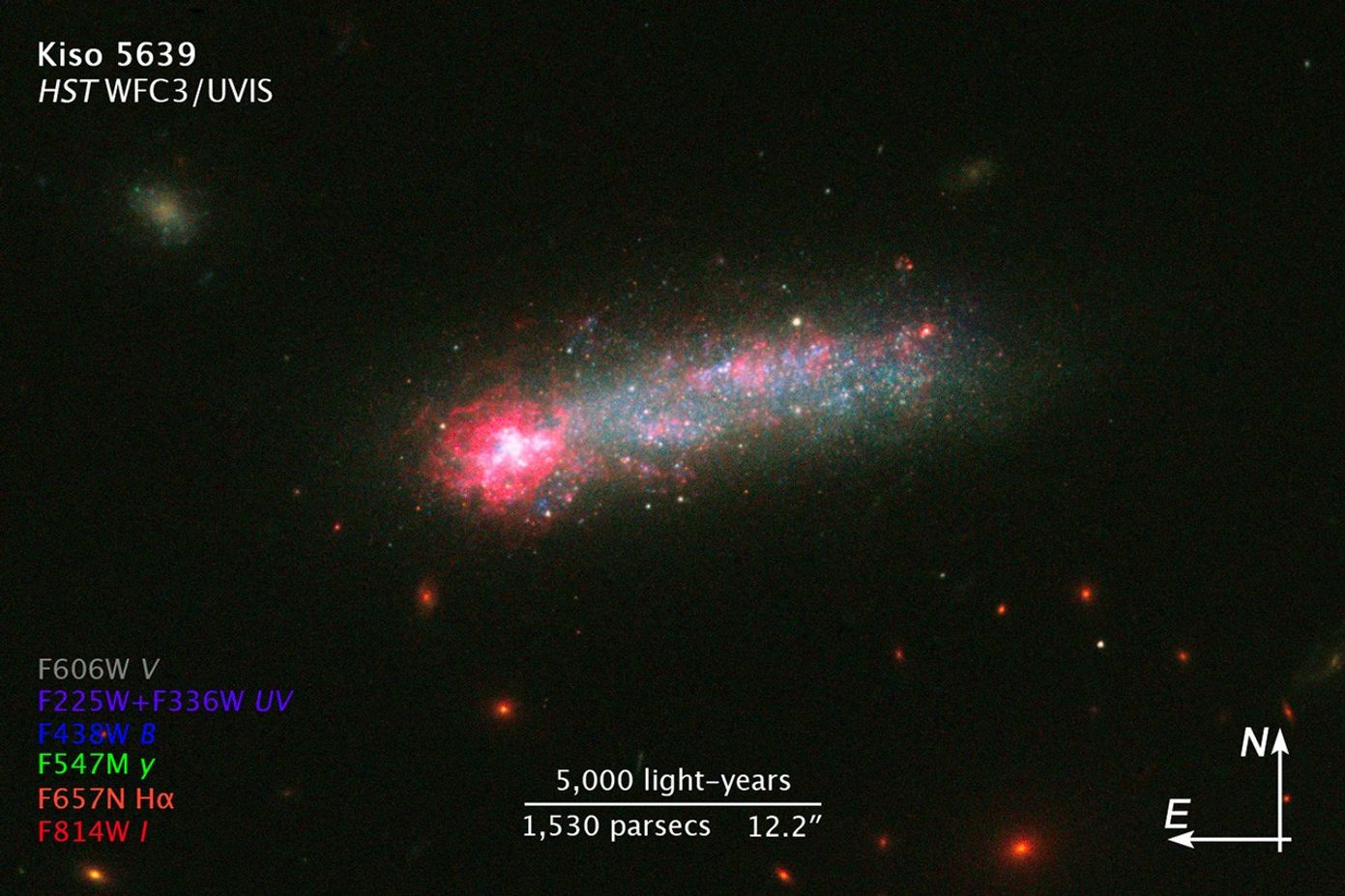1 min read
Scale and Compass Image for Kiso 5639

About the Object
- R.A. PositionR.A. PositionRight ascension – analogous to longitude – is one component of an object's position.11h 41m 7.5s
- Dec. PositionDec. PositionDeclination – analogous to latitude – is one component of an object's position.32° 25' 37.33"
- ConstellationConstellationOne of 88 recognized regions of the celestial sphere in which the object appears.Ursa Major
- DistanceDistanceThe physical distance from Earth to the astronomical object. Distances within our solar system are usually measured in Astronomical Units (AU). Distances between stars are usually measured in light-years. Interstellar distances can also be measured in parsecs.80 million light-years (24.5 million parsecs)
About the Data
- Data DescriptionData DescriptionProposal: A description of the observations, their scientific justification, and the links to the data available in the science archive.
Science Team: The astronomers who planned the observations and analyzed the data. "PI" refers to the Principal Investigator.Data were provided by the HST proposal 13723: B. Elmegreen (PI; IBM’s Thomas J. Watson Research Center), D. Elmegreen (Vassar College), J. Sánchez Almeida and C. Muñoz-Tuñón (Instituto de Astrofísica de Canarias), J. Mendez-Abreu (University of St. Andrews), and J. Gallagher (University of Wisconsin-Madison). The science team includes: D. Elmegreen (Vassar College), B. Elmegreen (IBM’s Thomas J. Watson Research Center), J. Sánchez Almeida, C. Muñoz-Tuñón, and M. Filho (Instituto de Astrofísica de Canarias), J. Mendez-Abreu (University of St. Andrews), J. Gallagher (University of Wisconsin-Madison), M. Rafelski (NASA Goddard Space Flight Center), and D. Ceverino (Center for Astronomy at Heidelberg University). - InstrumentInstrumentThe science instrument used to produce the data.HST>WFC3/UVIS
- Exposure DatesExposure DatesThe date(s) that the telescope made its observations and the total exposure time.February 16-17, 2015, and July 2, 2015
- FiltersFiltersThe camera filters that were used in the science observations.F225W (U), F336W (U), F438W (B), F547M (Strömgren y), F606W (V), F675N (H-alpha), and F814W (I)
- Object NameObject NameA name or catalog number that astronomers use to identify an astronomical object.Kiso 5639, KUG 1138+327
- Object DescriptionObject DescriptionThe type of astronomical object.Galaxy
- Release DateJune 28, 2016
- Science ReleaseHubble Reveals Stellar Fireworks in ‘Skyrocket’ Galaxy
- Credit

This image is a composite of separate exposures acquired by the WFC3/UVIS instrument. Several filters were used to sample various wavelengths. The color results from assigning different hues (colors) to each monochromatic (grayscale) image associated with an individual filter. In this case, the assigned colors are: Purple: F225W (U) Purple: F336W (U) Blue: F438W (B) Green: F547M (Strömgren y) Luminosity: F606W (V) Orange: F675N (H-alpha) Red: F814W (I)

Related Images & Videos

Hubble Captures a Fireworks Show in Kiso 5639
In this NASA Hubble Space Telescope image, a firestorm of star birth is lighting up one end of the diminutive galaxy Kiso 5639. The dwarf galaxy is shaped like a flattened pancake, but because it is tilted edge-on, it resembles a skyrocket, with a brilliant blazing head and a...
Share
Details
Claire Andreoli
NASA’s Goddard Space Flight Center
Greenbelt, Maryland
claire.andreoli@nasa.gov




























